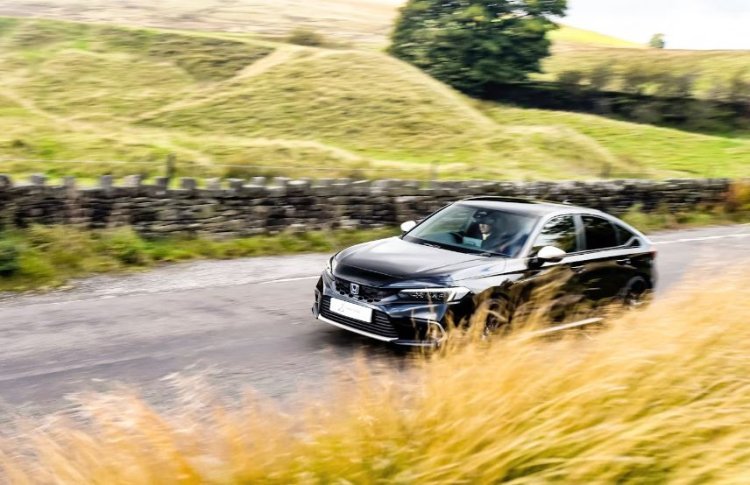Conquering the Road: A Guide to Car Maps in the Digital Age
Unleash your inner explorer! This guide dives into traditional & digital car maps, helping you choose the best fit for your adventures. Discover tips for smooth navigation and conquer the road with confidence.

For generations, car maps have been the trusty companions of road warriors, guiding them through unfamiliar territories and ensuring they reach their destinations. However, the digital age has ushered in a new era of navigation, with car maps evolving alongside technology.
This blog delves into the world of car maps, exploring both traditional and digital options. We'll discuss the advantages and disadvantages of each, helping you choose the best tool for your next adventure.
The Timeless Appeal of Traditional Car Maps
There's a certain charm to unfolding a paper car map, its crisp creases whispering of unexplored routes. Traditional car maps offer several benefits:
- Accessibility: Paper maps require no batteries or internet connection, making them a reliable backup in case of electronic device failure.
- Simplicity: Uncluttered layouts and clear legends make traditional maps easy to understand, especially for those less comfortable with digital interfaces.
- Big Picture View: Paper maps often provide a broader overview of the area, allowing you to visualize your entire journey and potential detours.
- Cost-Effective: Traditional maps are generally inexpensive and readily available at gas stations, convenience stores, or travel centers.
However, traditional maps also have limitations:
- Limited Detail: They may not include the latest road updates, construction zones, or points of interest.
- Bulkiness: Carrying multiple maps for a long trip can be cumbersome, especially in tight car compartments.
- Inflexibility: Replanning routes on the fly can be challenging with a traditional map.
The Rise of Digital Car Maps
Digital car maps have revolutionized navigation, offering a wealth of features and real-time information:
- Convenience: Digital maps are readily available on smartphones, tablets, and dedicated GPS devices.
- Rich Detail: They provide up-to-date road information, including traffic conditions, speed limits, and points of interest like gas stations and restaurants.
- Dynamic Rerouting: Digital maps can recalculate routes in real-time to avoid traffic jams or road closures.
- Multifunctionality: Many digital maps offer additional features like voice navigation, turn-by-turn instructions, and estimated arrival times.
Despite their advantages, digital car maps also have drawbacks:
- Reliance on Technology: Digital maps require a functioning device with a battery and internet connection, which can be unreliable in remote areas.
- Learning Curve: Some digital maps, especially those with advanced features, can have a steeper learning curve compared to traditional maps.
- Distraction: Using a phone for navigation can be distracting for drivers, potentially leading to safety hazards.
Choosing the Right Car Map for You
The best car map for you depends on your personal preferences and driving habits. Here are some factors to consider:
- Frequency of Use: If you're an occasional driver, a traditional map might suffice. Frequent travelers may benefit from a digital option.
- Comfort with Technology: If you're comfortable using smartphones and apps, a digital map might be a better fit.
- Travel Style: For spontaneous road trips, a traditional map offers flexibility. For long journeys with planned stops, a digital map with points of interest can be helpful.
Finding the Perfect Balance:
Many drivers choose to carry both traditional and digital maps. This provides a backup option and allows you to leverage the strengths of each format.
For instance, you can use a traditional map to get a broad overview of your journey and a digital map for real-time traffic updates and turn-by-turn navigation.
Beyond the Map: Essential Navigation Tips
No matter which type of car map you choose, here are some additional tips for a smooth and safe journey:
- Plan Your Route in Advance: Familiarize yourself with the route, key junctions, and potential detours before setting off.
- Allow Extra Time: Unexpected delays can occur. Buffering extra time in your schedule can help you avoid stress and maintain a safe driving pace.
- Take Breaks Regularly: Driving for long periods can lead to fatigue. Plan rest stops to stay alert and refreshed behind the wheel.
- Be Aware of Your Surroundings: Don't rely solely on the map. Pay attention to road signs and traffic signals.
- Enjoy the Journey: The beauty of road trips lies in the exploration. Let the map guide you, but also allow yourself to discover hidden gems along the way.
visit:https://adcash4cars.com.au/
By understanding the pros and cons of traditional and digital car maps, along with these essential tips, you can confidently navigate the roads and embark on unforgettable journeys.
What's Your Reaction?










![Wireless Connectivity Software Market Size, Share | Statistics [2032]](https://handyclassified.com/uploads/images/202404/image_100x75_661f3be896033.jpg)



